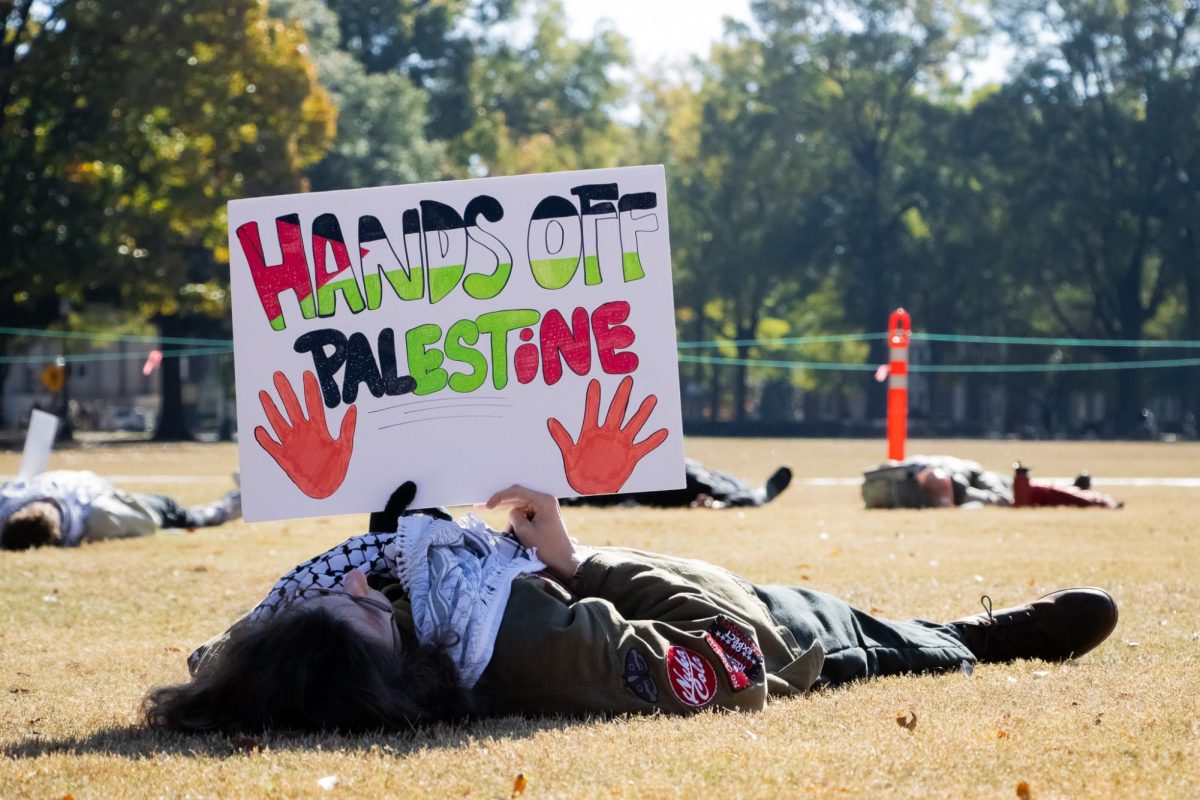When Arthur Dunning walked into his first class at The University of Alabama, half the class stood up and left.
“No one sat by me in class for the first three years. There’d just be empty desks,” Dunning said.
Dunning was one of the first black students to attend the University during the 1960s. Despite the the major achievements accomplished by Vivian Malone and James Hood, everyday life remained difficult and dangerous for black students during that time.
Currently the vice chancellor for international programs and outreach, Dunning went on to receive his bachelor’s, master’s and doctoral degrees from the University. Tuesday night, Dunning was part of a four-person panel in the Ferguson Theater that explored issues of race and segregation on campus.
Bryan Fair, the Thomas E. Skinner Professor of Law at the University, moderated the event.
“We are dealing with issues that have vexed The University of Alabama since its founding in 1831,” Fair said.
The panel followed the screening of the acclaimed documentary film “Crisis: Behind a Presidential Commitment.” The film follows President John F. Kennedy, Gov. George Wallace, Attorney General Robert Kennedy, Vivian Malone and James Hood as it presents the events surrounding the infamous Stand in the Schoolhouse Door.
The documentary was added to the National Film Registry in 2011 and is one of only 600 films on the registry.
“Twenty-five films are chosen each year by the board to be added to the registry,” Donna Ross, an employee of the National Film Preservation Board of the Library of Congress, said. “The films must be at least 10 years old and of great cultural, historical or aesthetic significance.”
This puts “Crisis” on the same list as iconic and historic films like “Mr. Smith Goes to Washington,” “It’s a Wonderful Life” and “Schindler’s List.”
Filmmaker Robert Drew was the executive producer of “Crisis.” Drew’s previous documentary “Primary” detailed five days during the primary campaigns between Hubert Humphrey and John F. Kennedy. It has also been added to the National Film Registry, making Drew one of only a few individuals to have multiple films named.
“I’ve heard about instances in which governors and other political individuals looked at ‘Crisis’ for guidance,” Drew said.
Participants of Tuesday night’s panel also included Don Seigal. Seigal was the secretary and treasurer of the SGA in 1963 and president of the SGA in 1964. He continues to serve the University on the president’s cabinet and the board of directors for the Blackburn Institute.
Seigal said during that time on campus, men like John Blackburn, UA educator and namesake of the Blackburn Institute, played an instrumental role in balancing the integration process.
Seigal said he remembers being invited to Blackburn’s house for breakfast along with a few dozen other student leaders on campus shortly before the Stand in the Schoolhouse Door, a now-famous moment in which former Gov. George Wallace prevented the enterance of two black students into Foster Auditorium to register for classes.
“What John Blackburn recognized was that you need to be organized in order to prevent civil disorder,” Seigal said.
Juxtaposed to Seigal and Dunning on the panel were Caroline Bechtel, a junior majoring in operations management, and Ross Green, a senior majoring in economics. Bechtel and Green both shared their experiences confronting segregation, particularly surrounding the sorority desegregation earlier this year.
“These issues [of race] have become cyclical, and we’ve never fully addressed them,” Green said. “James Hood said [in the film] that he wanted to be governor, and sadly, that probably still couldn’t happen.”
All four panelists urged greater involvement from students and faculty but said the future of race relations at the University remains unclear.
“I won’t be here for the 100th anniversary of the Stand in the Schoolhouse Door, but someone will be here,” Fair said. “It may even be you. And I hope by then you’re not having this same conversation.”








